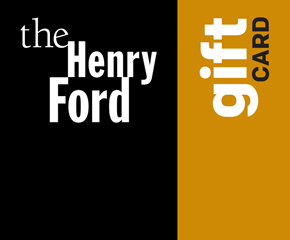
Actions of Innovation
Design: Creative Focus
Grades 2-5
Science, English Language Arts, Social Studies
Driving Question
When working through the “Design” phase of an innovation journey, how can students design a solution for a defined problem or need?Learning Objectives
Students will be able to:- Establish what is currently known and what information is needed to address a problem through a process known as “zero drafting.”
- Brainstorm possible solutions to a problem or a need using the “Wishing” technique.
- Determine which solutions are feasible to address the specific problem or need.
- Identify and develop one specific design solution to a specific problem or need.
Why This Matters
When attempting to solve a problem or need, students can feel overwhelmed by a “blank-page.” Or, they can get stuck on unfocused ideas. Zero Drafting is an ideation technique that encourages students to get their initial creative solutions out of their heads and on to paper, while using the information they already know. The Wishing technique encourages students to frame solutions as “wishes,” making them more comfortable sharing ideas without pressure of producing “real ideas.” Combining Zero Drafting with Wishing, students focus on features of their creative ideas to trigger new, but more realistic concepts to develop. By ideating feasible concepts, students will be able to choose one solution to develop as a concept in the post activity.
Standards
Common Core: CCSS.ELA-LITERACY.W.3-5.3, CCSS.ELA-LITERACY.W.3-5.7; NGSS: 3-5-ETS1-2;C3 Framework: D4.7.3-5; D4.8.3-5.
Hess Cognitive Rigor Matrix: Create DOK Level 1
Prep Activities
Students will use the Zero Drafting technique to write down information known, identify information that is still needed and reflect on why the information is important to addressing the problem or need.
Core Activities
Students will use the Wishing technique to brainstorm fantastical solutions, and then analyze these ideas to generate new, but more realistic concepts.Follow-Up Project
Students will write a development plan for one selected solution to a problem or need.Model i
Throughout this lesson, there will be opportunities to practice and develop Model I’s Habits of an Innovator and Actions of Innovation. Listed below are the Habits and Actions that students will be developing and practicing.Developing Habits of an Innovator
-
Stay Curious
Students will explore creative solutions to a problem or need. - Collaborate
Students will work together to design a solution to a problem or need. - Challenge the Rules
Students will challenge the rules as they develop their creative solutions to a problem or need. - Take Risks
Students will think BIG as they design a solution to a problem or need.
Practicing Actions of Innovation
- Define
Students will use their research to identify a specific problem or need. -
Design
Students will use their research to ideate and select one design solution to develop.
Prep Activities
Tell students they are going to brainstorm a solution to a problem or need that you have already identified. (If you don’t have a problem or need, see the Note Section below).
Before they brainstorm a solution, students need to remind themselves of everything they already know about a problem or need. They will use a technique called Zero Drafting. This will help them get their creative ideas flowing. It might look messy or unfocused, but the goal is to get everything they know out of their heads and onto paper.
Using a document camera or white board, draw two large columns. Write the following titles, one at the top of each column:
- Everything I know.
- Everything I want or need to know.
Using a problem or need that you have already researched and identified, have students share answers as you write them in the appropriate column. Students may work in pairs or small groups to generate questions before sharing as a full class.
Remind students that they are not yet coming up with solutions to the problem or need. They are only warming up their creative brains by remembering what they already know.
If students have many “want or need to know” items, put the lesson on hold and give them time to do more research.
Note: If you do not have a problem or need identified, you can use the sample problems outlined in the “Uncover” and “Define” lessons.
Or you can use the following example: Tell students that there are millions of kids around the world who do not have shoes that fit them. As the children grow, their shoes no longer fit. In some parts of the world, it is not easy to get new shoes. Without shoes, small cuts or scrapes can let diseases into the children’s bodies and make them sick. How can we make shoes that fit longer? Students can do a bit of research on this topic and then complete the Zero Drafting activity.
Core Activities
Explain to students that they will now use the information they already know to generate creative solutions to the problem or need.
Either in small groups or as a class, begin collecting a list of “wishes.” Wishes are fantastical, impractical solutions to the problem. Encourage students to let their imaginations run wild. If they get off track or if their creative juices are slow, remind them to refer to the two informational lists they just made about the problem.
Collect about a dozen “wishes” and write them down where everyone can see them.
From the list, students will choose one wish. Ask the students the following:
- Why is that one specific wish so impossible?
- Is there any aspect or part of the wish that we could change even a little bit to make it possible? More realistic?
- Then select another wish and go through the same process.
- Students will begin to generate a list of possible, realistic solutions to the problem or need. Write these down individually or as a class.
Students will choose one solution to develop. When deciding, ask students the following:
- Is this idea possible?
- Do the necessary resources (materials, people, etc.) exist to create (or enact) the solution?
- Does it address the problem or need?
Enrichment Challenges
Students could do this activity in pairs or small groups, working on large newsprint or poster-sized paper.
Students could complete more research on their “Want or Need to Know” columns, then return to the activity.
Follow-Up Activity
Using their selected solution, students should begin to make a development plan. This activity will vary widely, depending on the problem/need and solution selected.- If this solution is a product or item, students can begin to design and sketch a prototype.
- If this solution is a service or improvement on a service, students can design a plan to enact it.
Teachers might find that access to the internet is useful, as students may need additional research during this phase.
If teachers used the example problem—kids who outgrow their shoes—students can watch an Innovation Nation clip to see how one man is trying to solve this problem.
- The Shoe that Grows: Innovation Nation: Watch
Standards
Common Core State Standards In English Language Arts
CCSS.ELA-LITERACY.W.3-5.3. Write narratives to develop real or imagined experience or events using effective technique, descriptive details, and clear event sequences.CCSS.ELA-LITERACY.W.3-5.7. Participate in shared research and writing projects.
Next Generation Science Standards
3-5-ETS1-2. Generate and compare multiple possible solutions to a problem based on how well each is likely to meet the criteria and constraints of the problem.Hess Cognitive Rigor Matrix
College, Career and Civic Life (C3) Framework for Social Studies State Standards
D4.7.3-5. Explain different strategies and approaches students and others could take in working alone and together to address local, regional, and global problems, and predict possible results of their actions.D4.8.3-5. Use a range of deliberative and democratic procedures to make decisions about and act on civic problems in their classrooms and schools.


